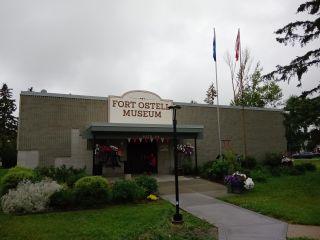Psychiatry
Hydrotherapy in a Prairie Asylum
How water was used to calm patients in a rural Alberta mental hospital.
Posted July 14, 2023 Reviewed by Tyler Woods
Key points
- Archival research into the history of asylums can lead to both answers and more questions.
- Hydrotherapy was used in many asylums, including ones in remote locations.
- The use of hydrotherapy in Alberta suggests that it was a form of treatment, not punishment.

I spent last week in the Provincial Archives of Alberta in Edmonton, Alberta. I was there to do research on the use of hydrotherapy in the Provincial Mental Hospital in Ponoka, Alberta. But my research took me in a somewhat unanticipated direction.
Most historians enjoy consulting archives more than any other form of research. That is not only because they are fabulous places to work. Archives are where historical mysteries lurk, where hidden documents linger, and where many of the questions historians ask can best be answered. The archives I visit tend to hold correspondences (letters and memos), the minutes of meetings, unpublished manuscripts, and images that are not to be found anywhere else. These unique documents often capture what people actually thought and felt about certain topics, which is often what historians are trying to uncover.
This is especially the case in the history of the asylum. Historians have debated the history of the asylum for many decades, dating back to the middle of the 20th century. Were asylums therapeutic places, designed to help the mentally ill regain their sanity? Or were they coercive institutions where punishment was more common than cure? The truth, if we can find it, can often be found in the archive.
But archives are not always comprehensive reservoirs of all the records produced by an individual, organization, or institutions, such as an asylum. I was hopeful that the Ponoka Hospital records would be fruitful because of an exhibition held by a local museum. One of the museum's main exhibitions was on the Provincial Mental Hospital, Ponoka and I could tell from the website that some of the images depicted the use of hydrotherapy at the hospital. As my blog on the topic describes, hydrotherapy is a term that describes how water was used to treat mental illness. While it was used in many ways, the images from the museum suggested that baths and cold water packs were utilized in the hospital.

Unfortunately, many of the documents associated with the Ponoka Hospital had been lost or destroyed. As with many asylums, it was spoken of in hushed terms. Kids were told that they might end up in Ponoka if they were acting too silly. It had always held an aura of mystery, but many of its mysteries were lost forever.
What I did find, however, were records on an auxiliary hospital in the south of the Province of Alberta, in Claresholm. This facility was founded in 1933 and held 100 female patients and its records had been saved. I focused on records from the 1930s and 1940s. Among its archives were ward books, which were daily records made by nurses about how various patients were doing and what treatments were given. When I saw that such records included information about the use of hydrotherapy, I broke the silence of the archives by uttering a whispered "Yes!"
So, what did these ward books say about the use of hydrotherapy in southern Alberta? While I haven't completed my analysis yet, there are some tantalizing indications. The first is the realization that, even in asylums in remote locations—just look at where Claresholm is on a map—hydrotherapy was in use. This shows how widespread the practice was.
The form of hydrotherapy used at Claresholm came in the form of "sedative packs." These packs wrapped patients relatively snugly in a sort of cold water straitjacket for up to three-hour stretches.
But were these sedative packs used for treatment or to punish patients? My hypothesis is that treatment was the more-likely purpose. Hydrotherapy wasn't used on just any patients at Claresholm. This might have been due to the fact that they lacked the facilities to use it on more than one or two patients, but it also appears that some patients responded to it better than others. It was used to calm down patients who were "disturbed," according to the ward book lingo. Only certain patients received hydrotherapy, however, and not always the most disturbed or disruptive patients. If it didn't appear to work, it was quickly discontinued.

In contrast, if hydrotherapy appeared to work, it was continued well after the patient's behaviour had become calmer, or to use the ward book lingo again, more "quiet and co-operative." The words "quiet" and "co-operative" do suggest that patients were expected to do what they were told and could not make much of a fuss, but it doesn't seem that hydrotherapy was used simply to put patients in their place. Indeed, there are few instances of patients resisting hydrotherapy when it was prescribed. Unfortunately, there are no indications about why hydrotherapy was prescribed in the first place to certain patients. Were they consulted about it? Or did the nurses and doctors simply make an educated guess? The archives provide no answers.
Overall, then, my trip to the Provincial Archives of Alberta was a great start to my hydrotherapy project. There were some disappointments, to be sure, but also some unexpected surprises. That is just the way archival research is. Most importantly, it's definitely given me more motivation to pursue this fascinating topic.


